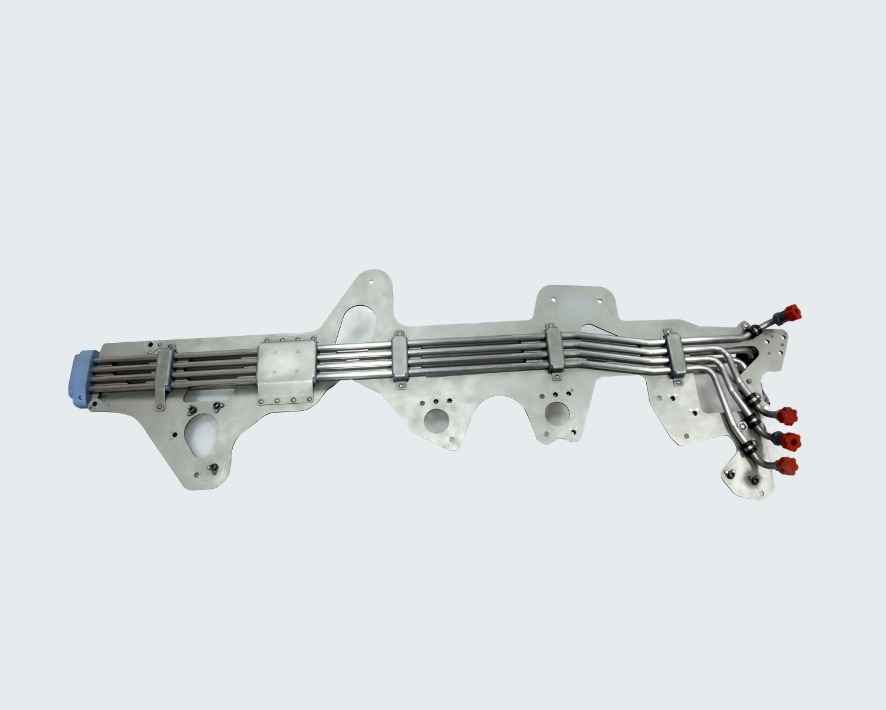Aerospace ducting systems play a critical role in aircraft functioning, facilitating the flow of air, fuel, and other fluids throughout the vehicle. Ensuring the safety, reliability, and performance of these systems is paramount in the aerospace industry. Achieving compliance with regulatory standards can be complex and challenging. This article delves into the regulatory landscape governing the aerospace ducting air conditioning system, discussing key standards, certification processes, and the importance of compliance for manufacturers and operators.
Regulatory Framework
The aerospace industry operates within a robust regulatory framework established by international, national, and industry-specific organisations. Key players in this regulatory landscape include:
-
Federal Aviation Administration (FAA): The FAA, based in the United States, sets and enforces safety standards for civil aviation. It issues regulations referred to as Federal Aviation Regulations (FARs), which govern various aspects of aircraft design, production, and operation.
-
European Union Aviation Safety Agency (EASA): EASA is responsible for European aviation safety. It develops regulations and certification standards for aircraft and aerospace products operating within the European Union (EU) member states.
-
International Civil Aviation Organization (ICAO): ICAO, a specialised agency of the United Nations, establishes international standards and recommended practices for aviation safety, security, efficiency, and environmental protection.
-
Society of Automotive Engineers (SAE) International: SAE develops aerospace standards covering various topics, including materials, components, systems, and processes. These standards are widely used by industry stakeholders worldwide.
Standards and Certification
Compliance with regulatory standards is achieved through rigorous testing, analysis, and certification processes. For aerospace ducting systems, several vital standards and specifications apply:
-
AS9100: AS9100 is a quality management systems standard in aerospace. It incorporates ISO 9001 requirements with additional aerospace-specific criteria. Manufacturers of aerospace ducting systems often seek AS9100 certification to demonstrate their commitment to quality and compliance.
-
AS1650: AS1650, published by SAE International, provides requirements for the design, fabrication, and testing of aerospace ducting and tubing systems. Compliance with AS1650 ensures that ducting systems meet performance, reliability, and safety criteria.
-
FAR Part 25: FAR Part 25 contains airworthiness standards for transport category aircraft certified for carrying passengers or cargo. It includes requirements for designing and installing aircraft systems, including ducting systems, to ensure safe operation under normal and emergency conditions.
-
EASA CS-25: EASA CS-25 sets forth certification specifications for large aircraft in the EU. Like FAR Part 25, it covers airworthiness standards related to design, construction, and systems installation, including ducting systems.
Importance of Compliance
Compliance with regulatory standards is not just a legal requirement. It is essential for ensuring the safety, reliability, and airworthiness of aerospace ducting systems. Here are some reasons why compliance is crucial:
-
Safety: Ducting systems are vital in aircraft operation, carrying critical fluids, such as fuel, hydraulic fluid, and air. Non-compliant or faulty ducting systems pose serious safety risks, including fuel leaks, hydraulic failures, and loss of cabin pressure.
-
Reliability: Aerospace ducting systems must operate reliably under various conditions, including temperature extremes, pressure differentials, and vibration. Compliance with rigorous standards helps ensure that ducting systems meet performance requirements and withstand operational stresses.
-
Regulatory Approval: Aircraft manufacturers and operators must demonstrate compliance with regulatory standards to obtain certification and approval from aviation authorities such as the FAA and EASA. Non-compliant ducting systems can delay certification processes and incur costly redesigns.
-
Liability and Reputation: In the event there’s an aircraft incident or accident, non-compliant ducting systems could expose aviation parts manufacturers, suppliers, and operators to legal liability and damage to reputation. Compliance helps mitigate these risks by adhering to industry best practices and safety standards.
Best Practices for Compliance
Compliance with regulatory standards requires a systematic approach and adherence to best practices throughout the design, manufacturing, and testing processes. Here are some best practices for ensuring compliance with aerospace ducting system requirements:
-
Design Validation: Conduct thorough design reviews and simulations to ensure that ducting systems meet performance, safety, and regulatory requirements. Use advanced modelling and analysis tools to predict and mitigate potential failure modes.
-
Material Selection: Choose materials compatible with the fluids, temperatures, and environmental conditions encountered in aerospace applications. Verify material properties and perform compatibility testing to prevent corrosion, degradation, or contamination.
-
Manufacturing Controls: Implement robust quality management systems and manufacturing processes to ensure consistency, traceability, and compliance with specifications. Perform in-process inspections and testing to detect and correct deviations early in the production cycle.
-
Testing and Certification: Subject ducting systems to comprehensive testing regimes, including functional tests, pressure tests, leak tests, and environmental tests. Engage accredited testing laboratories and certification agencies to validate compliance with applicable standards and regulations.
Conclusion
Compliance with regulatory standards is critical to aerospace ducting air conditioning system design, manufacturing, and operation. By adhering to industry best practices and certification requirements, manufacturers and operators can ensure aircraft systems’ safety, reliability, and airworthiness. Navigating the regulatory landscape requires a deep understanding of applicable standards, rigorous testing and validation processes, and a commitment to continuous improvement. By prioritising compliance, the aerospace industry can maintain the highest levels of safety and performance in ducting systems. That will contribute to the overall safety and success of air travel.


